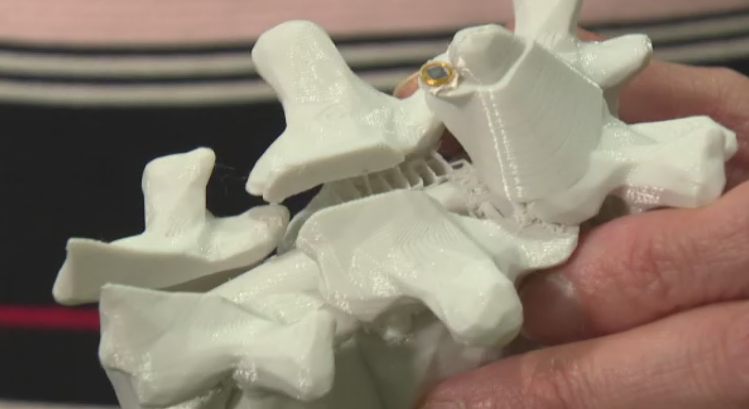Research being done at the University of Alberta could pave the way for restoring movement in patients with spinal cord injuries.

The research involves extensive mapping of the spinal cord and using a wire thinner than a human hair which can reach deep inside the spine and send electrical signals.
“We’re super excited about this because it’s giving hope,” said Dr. Vivian Mushahwar, who specializes in biomedical engineering.
Mushahwar led a team of U of A researchers in mapping out which parts of the spinal cord trigger the hip, knees, ankles and toes — along with the areas that put movements together.
“There’s this very small region, about five centimetres right at the base of the back, that contains the majority of those neural networks involved in walking,” Mushahwar said.
The implant the researchers have developed then stimulates the specific areas that they’ve mapped — which would essentially reactivate the networks.
So far, they’ve been working with the implant on animals only, but hope to move towards clinical trials in humans within five years.
The concept is similar to a surgery that Humboldt Broncos player Ryan Straschnitzki recently went through in Thailand, known as epidural stimulation.

Get weekly health news
In Straschnitzki’s surgery, doctors implanted electrodes over his spinal cord that are then activated with a stimulator. One week later, doctors also injected stem cells above and below the injury.
Since that surgery, the 20-year-old has been able to straighten his leg and walk with the use of a wheeled machine.
But because the U of A’s implant actually goes right into the spinal cord, the researchers are confident human users could walk up to a kilometre if the surgery is successful, which is 10 times farther than experts believe a patient could after the epidural stimulation implant.
“It seems like this micro-implant is activating those networks in a natural manner,” Mushahwar said. “We’re at the edge of merging the human and the machine.
“Imagine the future — a person just thinks and commands are transmitted to the spinal cord. People stand up and walk. This is the dream.”




Comments